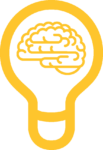
Learning & Development (L&D) teams have a distinctive challenge on their hands. Skill building programs are highly in-demand from employees and leadership. At the same time, L&D professionals are having to navigate an environment where staff have been putting in longer hours, which means that time constraints may pose an even more significant hindrance to training than they have in the past.
In a recent blog, my colleague Shana Bosler shared ways to mitigate obstacles to reskilling and upskilling staff members. To build on the foundation she set, I’d like to share seven tips to empower you to effectively prioritize skill building programs, so you and your employees can invest your time in initiatives that will deliver positive results.
There is no doubt that there are many capabilities that your people could benefit from as your company seeks to achieve its long-term goals. To find focus, I encourage your L&D team – as well as other relevant thought partners – to consider some questions through the lens of the Emergenetics® Attributes.
By utilizing cognitive diversity to define your plan, you can ensure that you are approaching your reskilling and upskilling initiatives from a broad range of perspectives, which can help you make better decisions and appeal to the Thinking and Behavioral preferences of your employee base.
7 Questions to Solidify Your Skill Building Strategy
 What’s the return on investment (ROI) for each skillset?
What’s the return on investment (ROI) for each skillset?
Considering the Analytical Attribute, I invite you to evaluate the potential ROI of your various upskilling programs, including quantifiable benefits liked increased efficiencies. With that information, you can identify opportunities that have the greatest impact to your bottom line. By initially prioritizing high-ROI talents, you may also find that the executive team is more willing to invest in future programs because of the outcomes you are able to deliver.
 What are the day-to-day impacts of the trainings?
What are the day-to-day impacts of the trainings?
From the lens of the Structural Attribute, I encourage you to determine practical outcomes that you can realize by investing in skill building programs, such as more productive communication. With an understanding of the day-to-day applications of the initiatives you are exploring, you can recognize which elements will have a more significant effect on the operations of your organization.
 Which solutions are most likely to positively impact employee connection?
Which solutions are most likely to positively impact employee connection?
Programs that help your people feel more engaged with one another can inspire results by improving collaboration and team dynamics. Leaning into the Social Attribute, examine the capabilities that you’ve identified in your planning and evaluate the human element by considering how these talents can contribute to better working relationships and a more engaged, positive culture.
 Which opportunities align best to your company’s long-term vision?
Which opportunities align best to your company’s long-term vision?
Many organizations are re-evaluating the make-up of their companies as they adapt to the future of work. Consider the Conceptual Attribute as you reflect on the vision for your company and big picture business needs to help uncover which aptitudes are most important to realize and activate the future you are striving to build.
![]() What are your employees’ preferences when it comes to skill building?
What are your employees’ preferences when it comes to skill building?
By understanding the interests of leadership and staff, you can better center your initiatives. Get feedback on the capabilities that employees, managers and executives would prefer to prioritize for their own careers as well as the growth of their colleagues and team members. Using a mix of tools to gain insights such as surveys, one-on-one interviews and focus groups, can help you engage staff across the Expressiveness spectrum.
![]() Where can you find quick and steady wins through your programming?
Where can you find quick and steady wins through your programming?
Building new skills takes time, and it can be motivating for employees and leaders to see early success. Determine the time it will take for staff to build the various talents you are considering within your strategy. You may wish to prioritize a few aptitudes across the short-, medium- and long-term timeframes, or set your focus on skills where staff can realize both short- and long-term milestones so that you engage all sides of the Assertiveness Attribute.
![]() Which programs can become a company standard and which are more individualized?
Which programs can become a company standard and which are more individualized?
Some aptitudes are foundational to the success of your organization while others may be beneficial to smaller groups. Considering the lens of Flexibility, determine which capabilities would be particularly useful to your broad employee base to set the stage for further, specialized development.
After you have answered these seven questions, review your responses and look for overlap that would support each of the Attributes. The commonalities you identify can serve as the basis for your skill building programs and will help you focus your and your employees’ energies on the talents that are most likely to support positive outcomes from all perspectives.
Prioritizing your programs is just one step in building your overall reskilling and upskilling strategy. To learn more, we encourage you to explore our recent eBook!
Or, discover how Emergenetics can support your work by getting in touch with one of our team members using the form below.
 Print This Post
Print This Post

